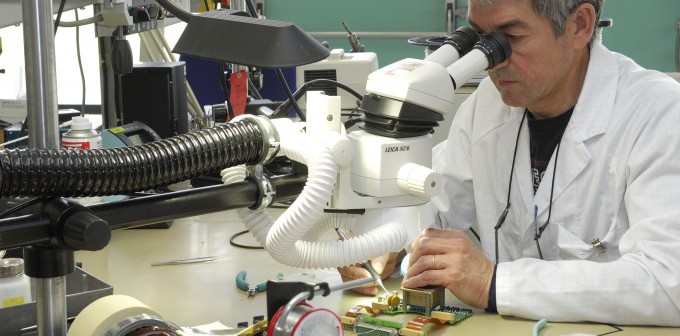Lean Repair: towards increased customer satisfaction
The avionics system and product repair activity is one of the pillars of the Avionics Services Worldwide business at Thales. It is also a key differentiator for upcoming projects, as it clearly contributes to enhanced customer satisfaction through the delivery of expected levels of performance and competitiveness. Thales is constantly looking for ways to improve this activity. Olivier Brusq, Operational Business Support Manager, answers our questions on the steps forward.

HOW CAN THALES IMPROVE ITS REPAIR PERFORMANCE LEVEL?
Based on the principle that only satisfied customers will continue partnering with us, our repair improvement project, called “Wings Repair”, has two main objectives: to be excellent in delivery and to be prepared for new ways of conducting repair business.
If we analyse the avionics industry’s best practices and benchmarks, they all focus on value perceived by the customer – and rely on teamwork to improve performance. These are part of the Lean principles applied to better satisfy customers. The Lean method was selected and integrated in the Wings Repair project launched by Thales in 2014.
We are convinced that the improvement of our performance has to be achieved by improving physical flow. All value-creating steps of our repair process should occur in tight sequences so that the product flows smoothly towards our customer.
HOW WILL WORKING ON THE FLOW INCREASE OUR LEVEL OF PERFORMANCE?
Working on the flow means reducing disturbance by eradicating bottlenecks and therefore enhancing repair capacity. The energy is spent solving problem root causes and not just on meeting turnaround time objectives.
The goal is to make the flow continuous by trying to prevent disruptions, blocking points and to remove peaks like batches, which impact downstream activities.
This Wings project we are deploying is based on a step-by-step approach, meaning no overnight revolution will take place, but our flow improvement will be continuous.
Customer repair expectations can vary depending on their business model:- GSD (Guaranteed Shipping Date): when a unit arrives in house, a Guaranteed Shipping Date is proposed to the customer in return.
- Fill Rate: the goal is to keep spares on customer shelves. Knowing the customer spare level, Thales controls its work-in-progress in shop to be sure the agreed limits are respected.
- Average global Thales TAT: a global Work-In-Progress is managed for a customer through the full Avionics Services Worldwide’s network to ensure the average TAT (turnaround time).
- PSA: A model based on Airframer Contractual Conditions, Thales sticks to the contractual commitments.




